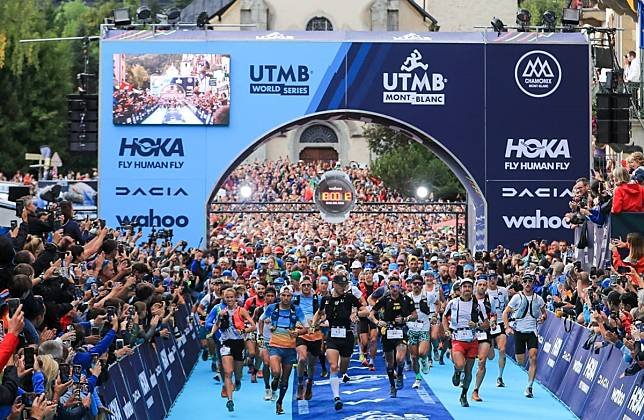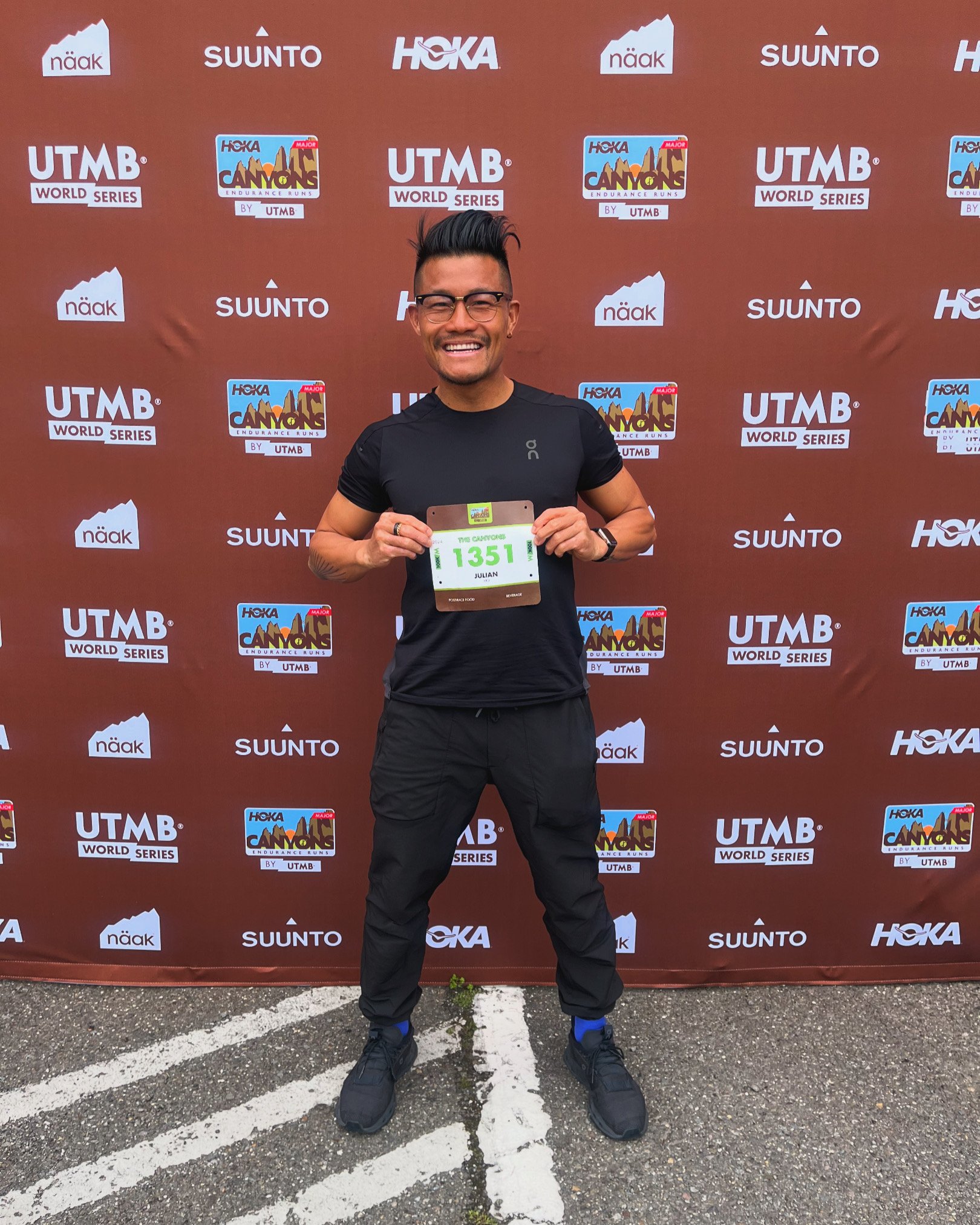Part 3 - The Training - “The Juicy Stuff”
Adductor Side Planking, one of many RUNCON exercises that are ultra-runner specific.
As I begin writing this third part of the ‘Mind of an Ultramarathoner’ series, I am coincidentally doing so on the weekend of my favorite local race, the Sulphur Springs Trail Race, which I decided to not run this year because of other commitments, as well as strategic race season scheduling. I definitely have a lot of fomo, especially since they became an official qualifying race for the Western States 100 miler, one of the most coveted ultra races in the world. This is a big deal for a small local race in the flatlands of Ontario, because it will bring more recognition to the sport in this part of the country. It will also incentivize more participation and grow the sport. All of this helps create context around a training journey, and adds another layer to one’s motivation and commitment.
Planning my year. Envisioning the future. Setting goals, intentions, and directions according to destination points.
The first part of training that people largely overlook is studying the course. By studying the course, you mitigate uncertainties, tactfully organize logistics, manage expectations and that of your team, and more confidently formulate a strategic plan of action. This allows you to know what to physically train for specifically, purchase the proper equipment to endure the race terrain, and rehearse a fueling strategy critical for race day success. The reason why I have never DNF’d (Did Not Finish) a race, or incurred any severe injury, or continue to progress my abilities in the sport is highly due to the skill of preparedness. I admit that sometimes I like to get a general / casual overview of the course, as opposed to a microscopic study of the course. This allows me to experience the surroundings with a brand new, unbiased nature, implementing the philosophy of ‘beginner’s mind’. But that comes from knowing your intentions with that particular race, and how it integrates with the rest of your race season. I digress.
As you can see at the bottom of this photo, the topography is a net elevation down hill. At first, sounds great right, super fast and free speed! Well, yes, kinda, but brutal tough on the quads! Had me sore for an entire week afterwards.
The second part of training is periodization, mapping your training schedule over a time horizon. Probably the most ‘heady’ part of training. This training mapping manages your focal points, direction, benchmarks, milestones, sequencing of day to day workouts, proportions of volume, frequency, intensity, rest periods, injury management, strength training, skill building, etc. Think of it as following a cooking recipe for your favorite dish. If you mistime when to add in an ingredient, or set the wrong temperature, or forget to include an ingredient, the end result of the dish is largely compromised.
There are 3 main approaches to periodization in ultramarathon training: linear (classic), block, and hybrid. The linear, most common and recommended for beginners and intermediates, is broken into 3 phases: preparation (base), competition (peak), and transition (recovery). The block, most common for advanced, is broken into 4 months, alternating from one month accumulation (of a particular skill) and the following month of restitution (recovery from that skill and an introduction of another skill). Skills can include pacing, VO2 max, lactate threshold, fueling, temperature adaptation, inclination, altitude, footwork, impact and ground reaction forces, gait mechanics, core strength, injury management, cross training, etc. The hybrid, most common for intermediates, is a combination of linear and block where a block of 4 months can be broken into monthly linears. Weeks are further broken into ‘loading’ and ‘deloading’. So for example, one month of a hybrid program consists of 4 weeks; week 1 to 3 consist of progressively ‘loading’ (intensifying) workouts and mileage, then week 4 is a ‘deloading’ recovery week. Each month also links from one to another with the 3 phases (base, peak, recovery) of linear periodization in mind. Of the three styles of periodization, I find myself switching depending on my intention for the race. If I plan on finishing fast and pushing new boundaries, I will outline a hybrid plan. To me, this requires more engagement and week to week assignments. If I plan on simply completing a race and keeping my competitiveness in balance, I will take on a linear approach to periodization. This is what I did for my most recent Canyons 100k race.
This is a sample schematic of a periodization plan from my Ultra Coaching certifying body UESCA, which gives you an idea of how to map out a training program.
I started in the middle of December, 4.5 months out from the race at the end of April. I decided I wanted to hit 3 milestones during my training timeline, which I call peaks. My training peaks acted as mini milestones. Milestones translate into confidence anchors, especially coming into a new season, and a brand new course, which I decided to not meticulously study. My 3 milestone peaks included a 65km continuous trail run effort in early March, a back to back two marathons in one weekend in late March, and a mid April technical mountain race. These offered me 3 benefits: mental fortitude, physical preparedness, and a more refined ‘longevity-based’ game plan.
What helped me achieve my 3 milestone peaks brings us to the third part of training, which is physical training. I am the biggest proponent of ‘cross-functional’ fitness training for runners as I believe fitness is the most important factor, mentally and physically, for Ultra success. I divided my training into three equally important categories:
Run-specific strength training in the gym (which I call ‘Runcon’, also the name of the program I created which uses free weights, resistance bands, and the cable machine): Runcon focuses on training movement patterns and myofascial sling system strength (body-wide coordinated strength), rather than body parts in isolation. The intention is injury prevention work (prehab) and compound exercises for core-integrated training.
Cross-training: crossfit style gym conditioning consisted of circuiting through various aerobic machines (rower, skierg, versa climber, etc.) and high-intensity task-based drills (Medicine Ball Tosses, Kettlebell swings, Sled push, etc.), and playing sports (soccer, basketball, tennis).
Active recovery: a very robust regimen of mobility and flexibility, Yoga, swimming, sauna, ice baths, chiropractic, physiotherapy, massage, cupping, and kinesiotherapy. This category is where my longevity-based mindset really flourished, and helped me realize I still have yet to peak in this sport, being in my mid thirties.
Contrast therapy was one of my go-to active recovery activities pre and post workouts. It became a part of my routine, an integral part of my lifestyle as an Ultramarathon runner, especially since it helps train the mind as well as recover the body.
When I look back at my results and compare my training, the 4th factor that could have impacted my finishing time was run workout specificity. The Canyons course had a heavy dose of continuous downhill which really got to me. In hindsight, I wish I had put in more running workout time on continuous hills, but the reality is that I live in Toronto, and to train on mountains regularly wasn’t available. These are the small but big things you have to accept, live with, and do the best with what you have.
Returning back to periodization talk, I have yet to intentionally implement a block periodization but for my next race, I have actually started down this path. This summer I plan on running my first Spartan obstacle course race in August, so with a 2.5 month lead up, beginning in June, I will focus on shorter and more intense workouts that include strength and power in circuit style. I will then move into inclination run training and cross training. Then finally during the last few weeks leading up, I will work on specificity of Spartan style obstacle training. This will give me a great base for another 100k race in the fall season.
I hope you enjoyed reading the juicy stuff. Every race has a different training approach to it, but as I get more races under my belt, this process refines and the outcomes of it become more predictable. There are many other factors that determine one’s ability to adhere to and implement training protocols like I’ve mentioned above, which is why my approach is not advised for another runner. Every runner needs their own customized approach, which is why having a coach is integral. But that’s not to say you can’t ideate from my programming!
The finish line never felt so good.
Next chapter in this series is The Race, where I share the logistical prep for a destination based race, getting in the zone during tapering, the day before, the actual race, and mental highs and lows, and the result. Thanks for reading and looking forward to sharing the next part.



















